The dunnock is the Cinderella of the bird world. Sweeping up underneath the other birds, and always missing out on the celebrity invitations (try finding a dunnock-themed Christmas card).
However, like the robins and wrens, dunnocks are all around us, and they bring some welcome music to the winter months.
The sweet, high-pitched stream of notes sounds somewhat thin, almost fragile.
It can be most noticeable on bright, frosty days, when its crystalline qualities somehow suit the weather conditions.
There isn’t much of a tune to hang on to. Recommended approach:
a) notice that it isn’t quite right for a robin or a wren (and certainly nothing like a blackbird or a song thrush)
b) realise it’s pretty much the same each time - a few seconds in every burst, all around the same volume
c) become familiar with the sound through sheer repetition.
February is a good time to get to know the dunnock, while most of the birdsong is still just brewing, and the branches are bare.
Dunnocks like to sing from a lowish position, often around human head height. They can perch out in profile while in song, but are as likely to be tucked a little way into a shrub, making them easy to miss.
And when seen well, the dunnock reveals a subtle beauty of its own: mottled silvery greys transitioning into a chequered array of buffs and browns.
The experience of listening to a dunnock may also be enhanced by knowledge of its subversive private life.
This has not always been well understood. The Reverend Frederick Morris, a Victorian ornithologist as well as priest, urged his parishioners to see in the dunnock a model for their own behaviour:
Unobtrusive, quiet and retiring, without being shy, humble and homely in its deportment and habits, sober and unpretending in its dress, while still neat and graceful - the Dunnock exhibits a pattern which many of a higher grade might imitate, with advantage to themselves and benefit to others through an improved example.
While few would argue about the modesty of the bird’s appearance, more recent studies of dunnock behaviour have revealed that, far from the sober role models they have been cast into, dunnocks are in fact notably randy.
Both males and females are prone to taking multiple partners during the breeding season, forming complex sexual arrangements and mating with high frequency.
Little brown extras
‘Dunnock’ is derived from Old English, and means ‘little brown one’.
They have many local and traditional names (including - somewhat confusingly -‘hedge warbler’), and are still often referred to as ‘hedge sparrows’.
You can tell they are not true sparrows by their thin beaks. This gives away their preference for eating insects, and is why you’re unlikely to see one hanging off your peanuts.
Dunnocks are found througout Europe, and in New Zealand, where there were introduced. Find out more about dunnock behaviour and ecology in the UK on the BTO website.
🔊 Link of the week
Best new birds sounds from Cornell Lab
Yes, I’ve heard a Western Meadowlark before, but as clear and true as this one? And I’d never heard a White Bellbird - more like an intercom alert on a space station.
As ever, the Cornell Lab of Ornithology (creator of the Merlin app) presents its remarkable catalogue so beautifully. Take fifteen minutes to bathe in these sounds.
(Thanks Lev for recommending.)
This is the sixth instalment in 2025’s cycle of Shriek of the Week. You can catch up with Robin, which includes details about how all this works, as well as Wren, Song Thrush, Blackbird and Great Tit.
For those in a position to do so, taking out a paid subscription to Shriek of the Week supports me to write more and keep this all going.
It also gets you an invite to our livestream-hopping Early Bird Club call - our next is 8am GMT on Saturday 1st March.
To everyone who has supported Shriek of the Week: thank you.
Welcome to new paying subscribers Paul, Elena and B, and thanks to long-standing supporters and friends.
🐦⬛ Other ways to find birds with me this spring
Join an early morning birdsong walkshop at Stanmer Park, near Brighton on Saturday 8 March. TICKETS HERE
Join a walk at Rye Harbour Nature Reserve on Sunday 2nd March (Sussex Wildlife Trust event). TICKETS HERE
Explore the A-Z archive of Shriek of the Week
Credits:
The quote from the Reverend Frederick Morris is as reproduced in The Wisdom of Birds: An Illustrated History of Birds, by Tim Birkhead.
Dunnock image by Kathy Büscher.




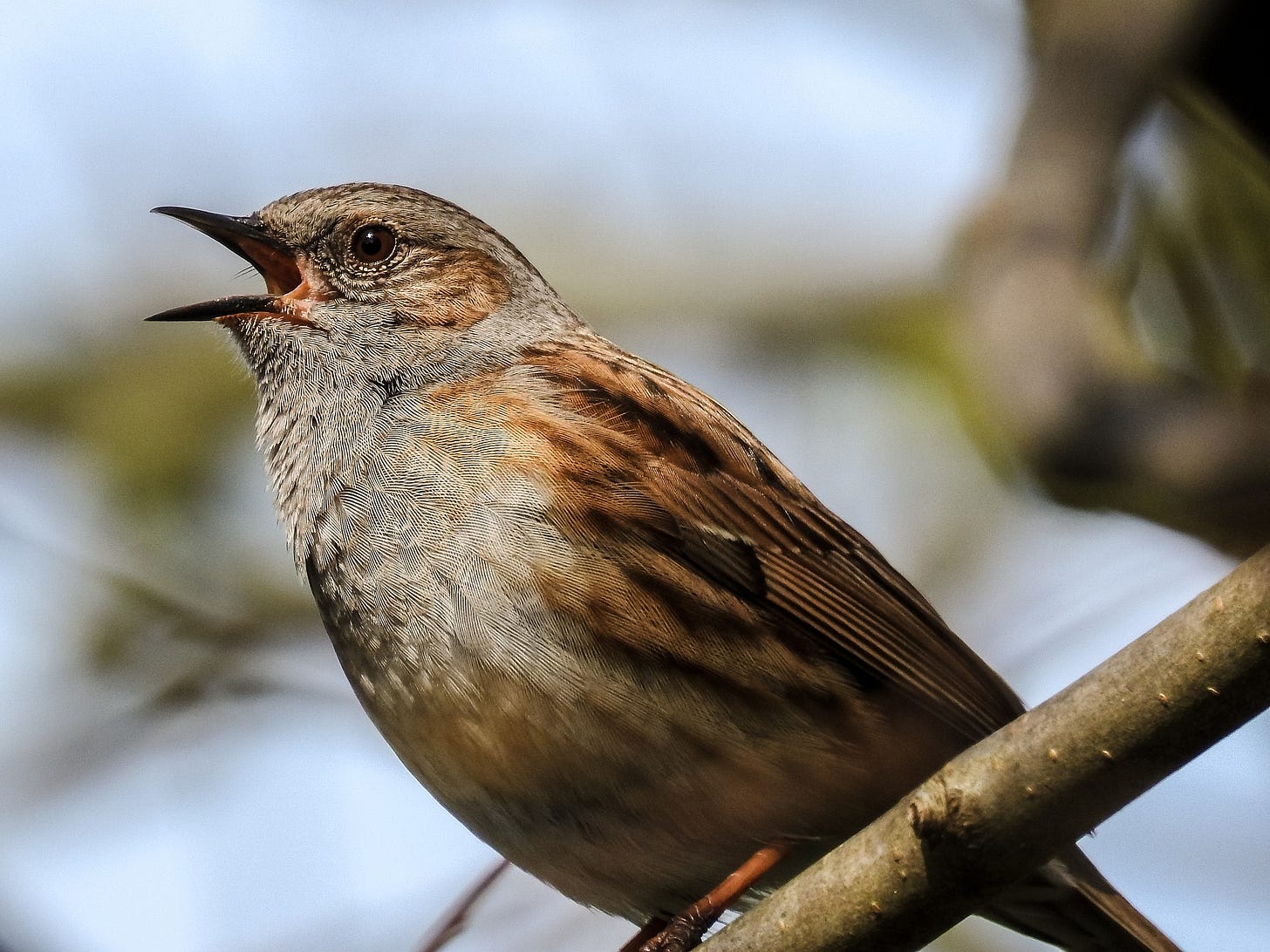
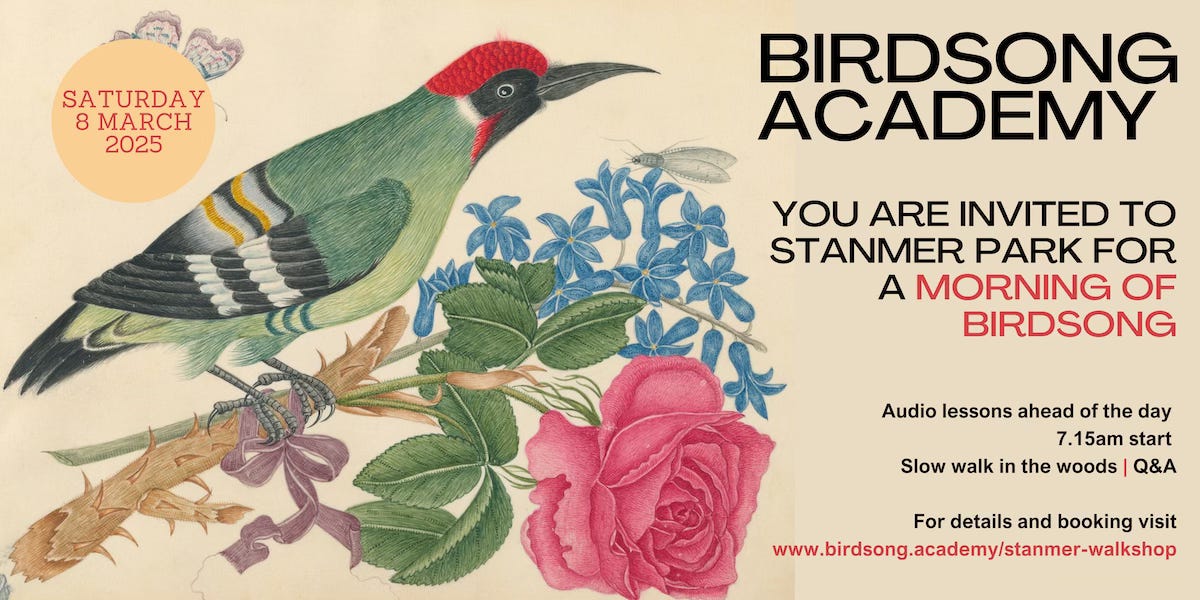


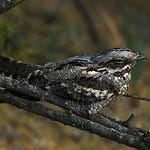
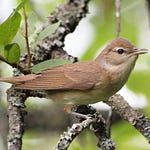

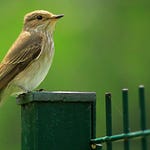


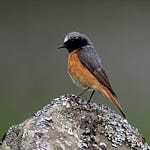
Share this post